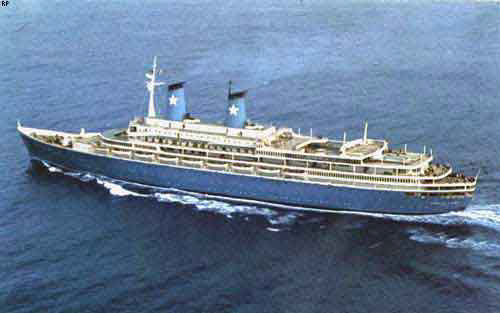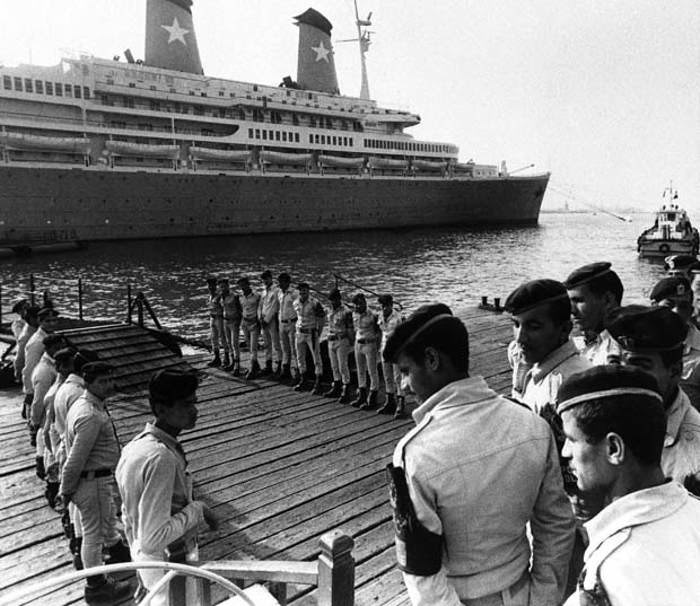Achille Lauro (2003), through its title, takes up the aspects of safety, collective and individual fear amongst the longing for pleasure and holiday. Achille Lauro, a 1985 hijacked luxury cruiser is regarded as one of the first planned attack on tourists.
The offset prints are photo montages of beach images set against an ocean background. All images are taken out of travel broschures. The isolated beach architectures look like floating ships or aircraft carrierson the high seas.


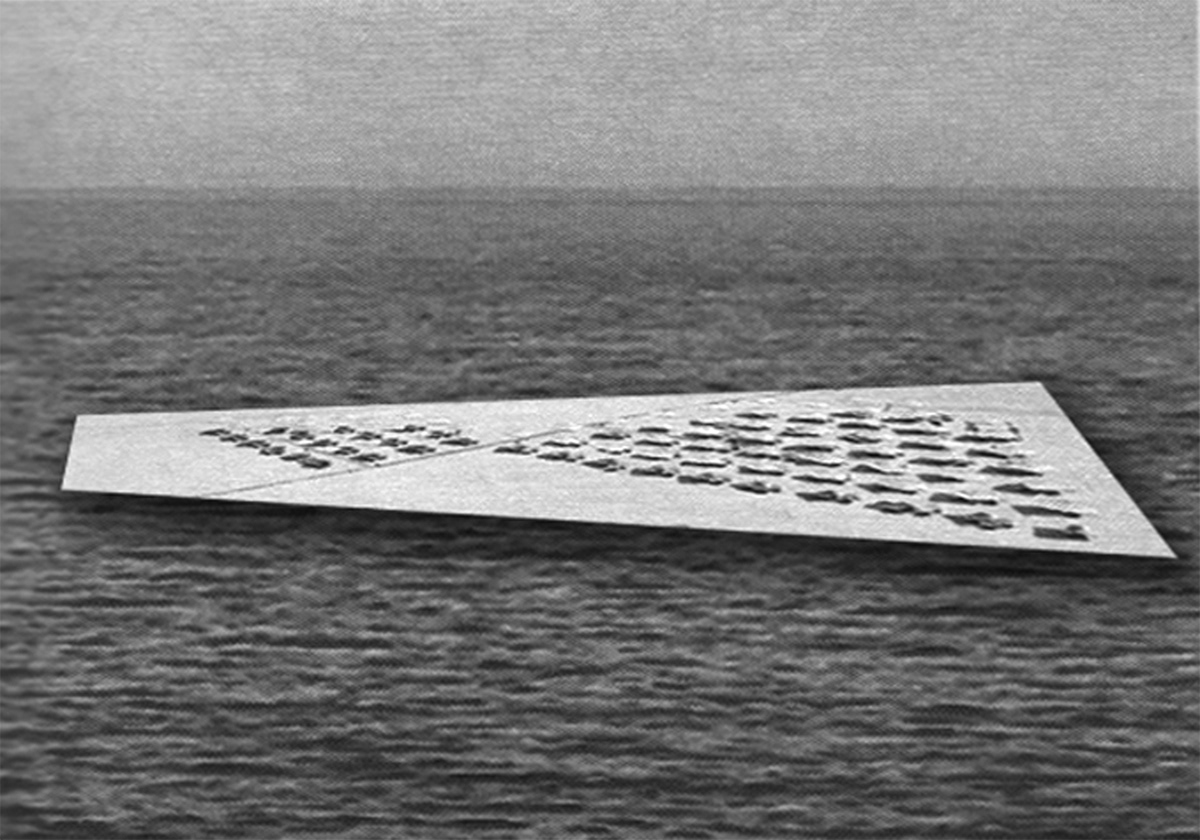
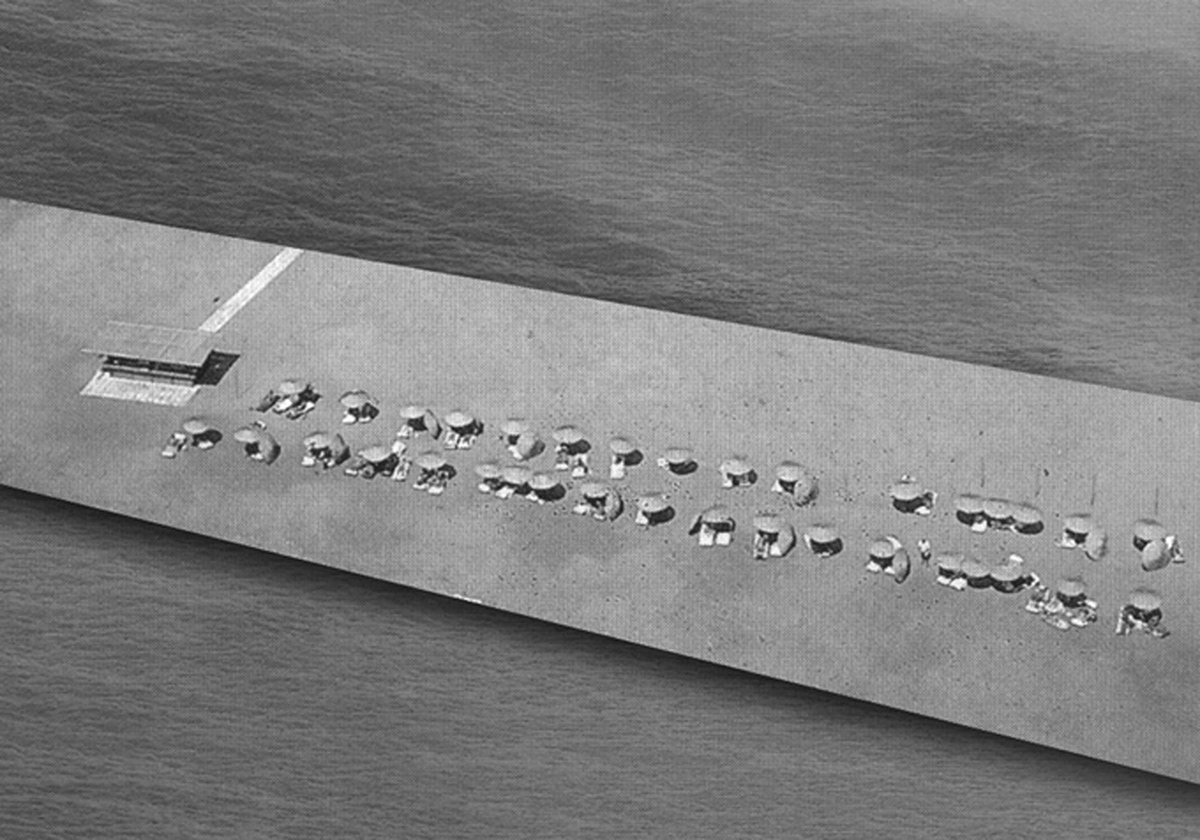


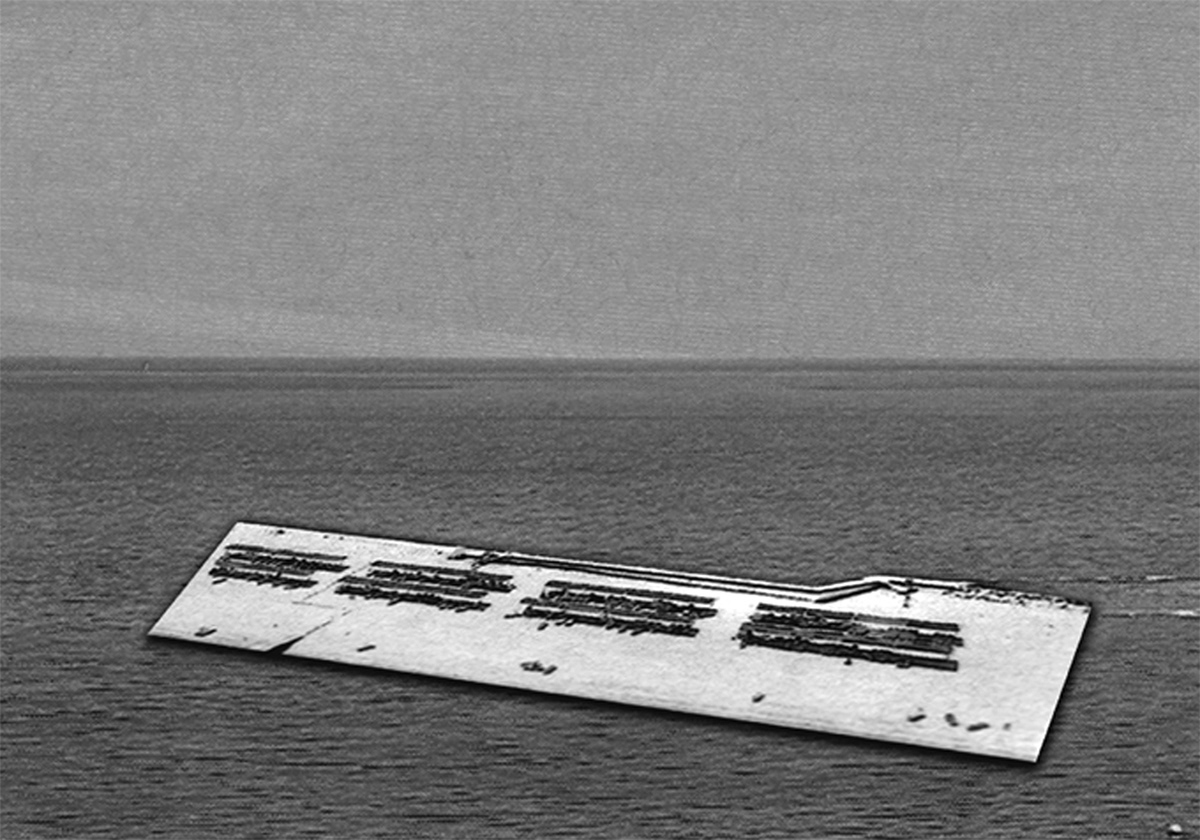
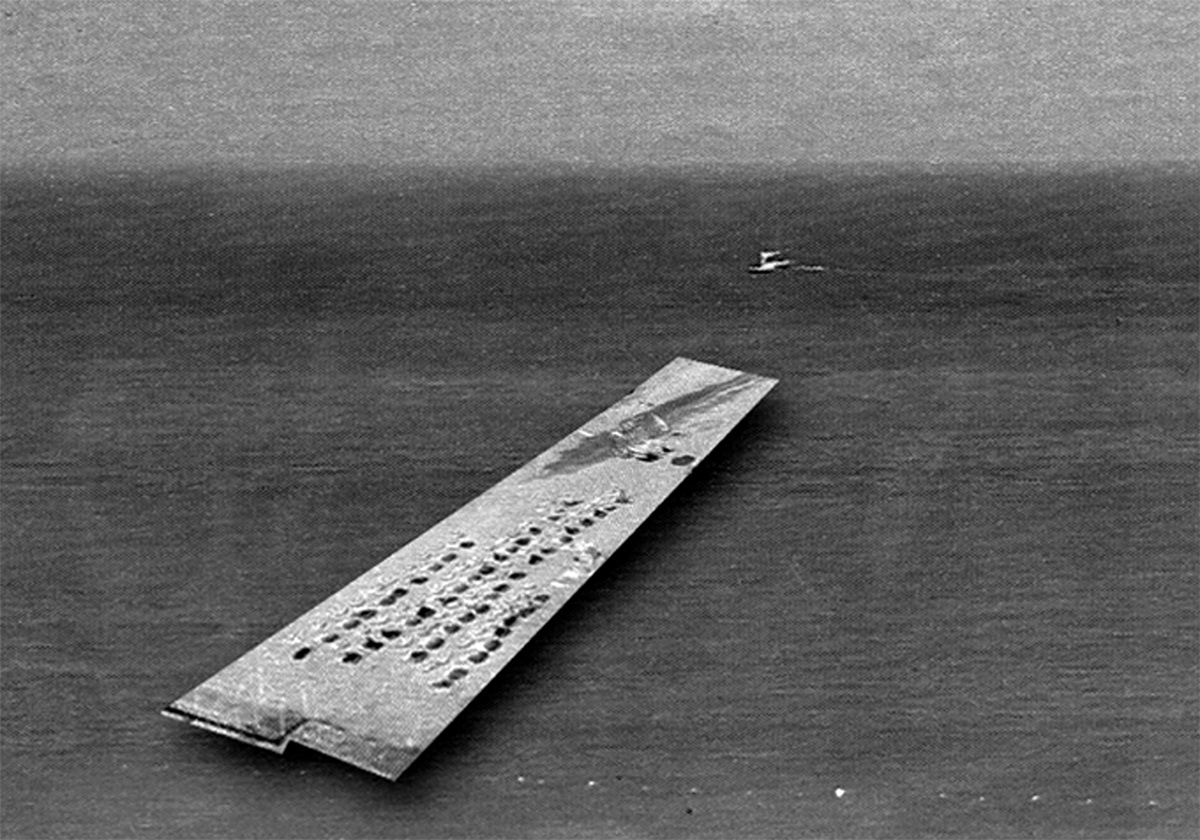
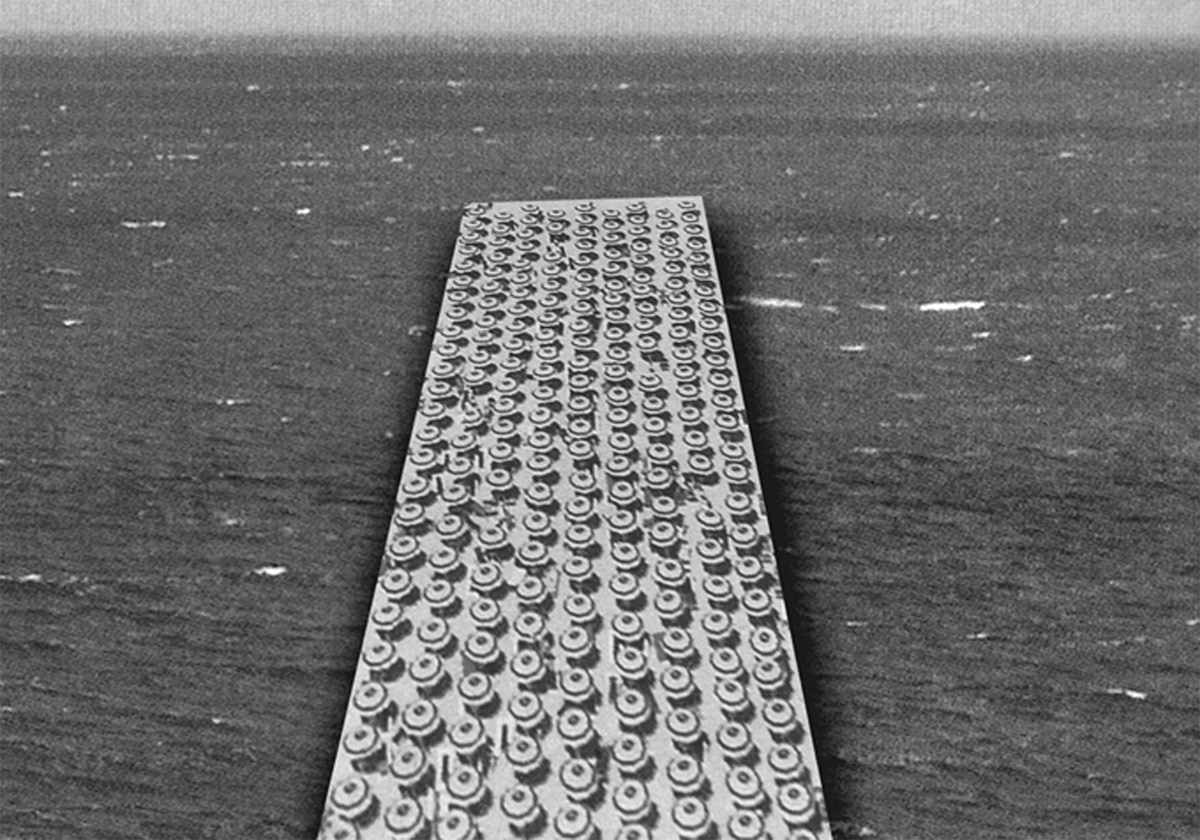
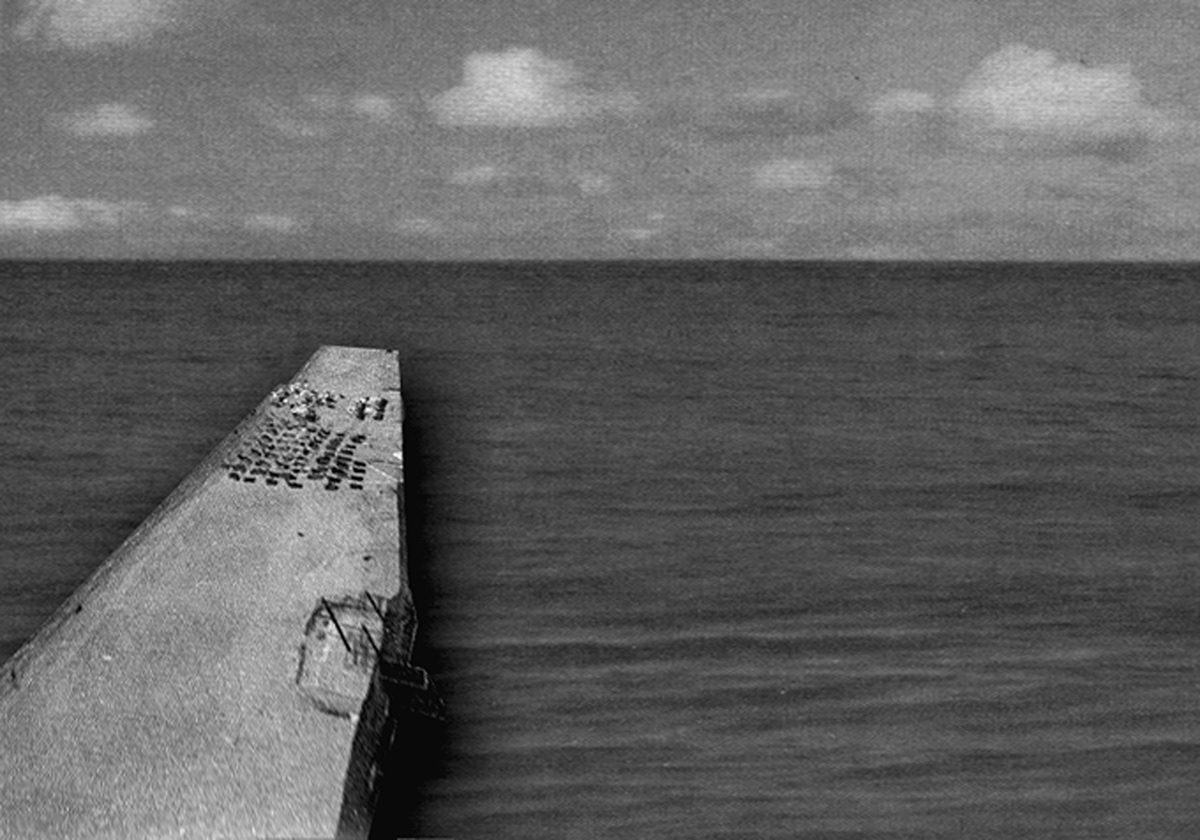
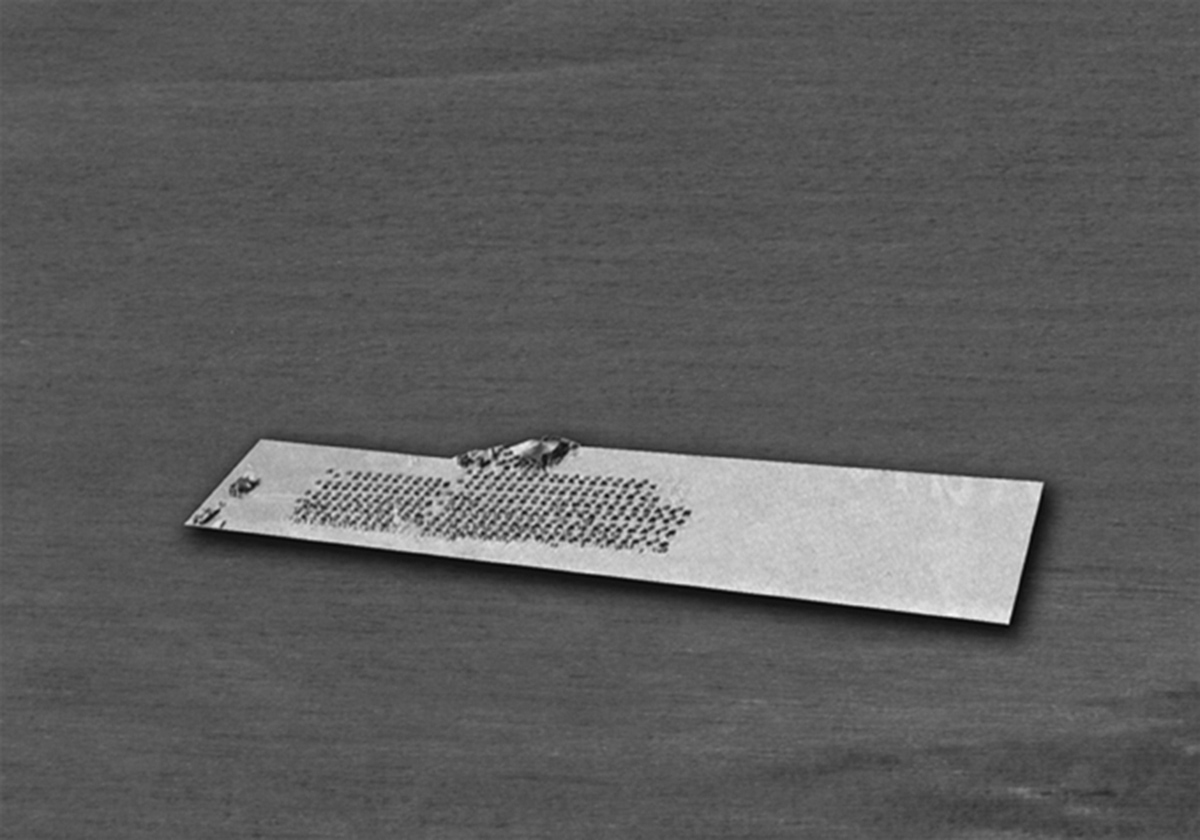
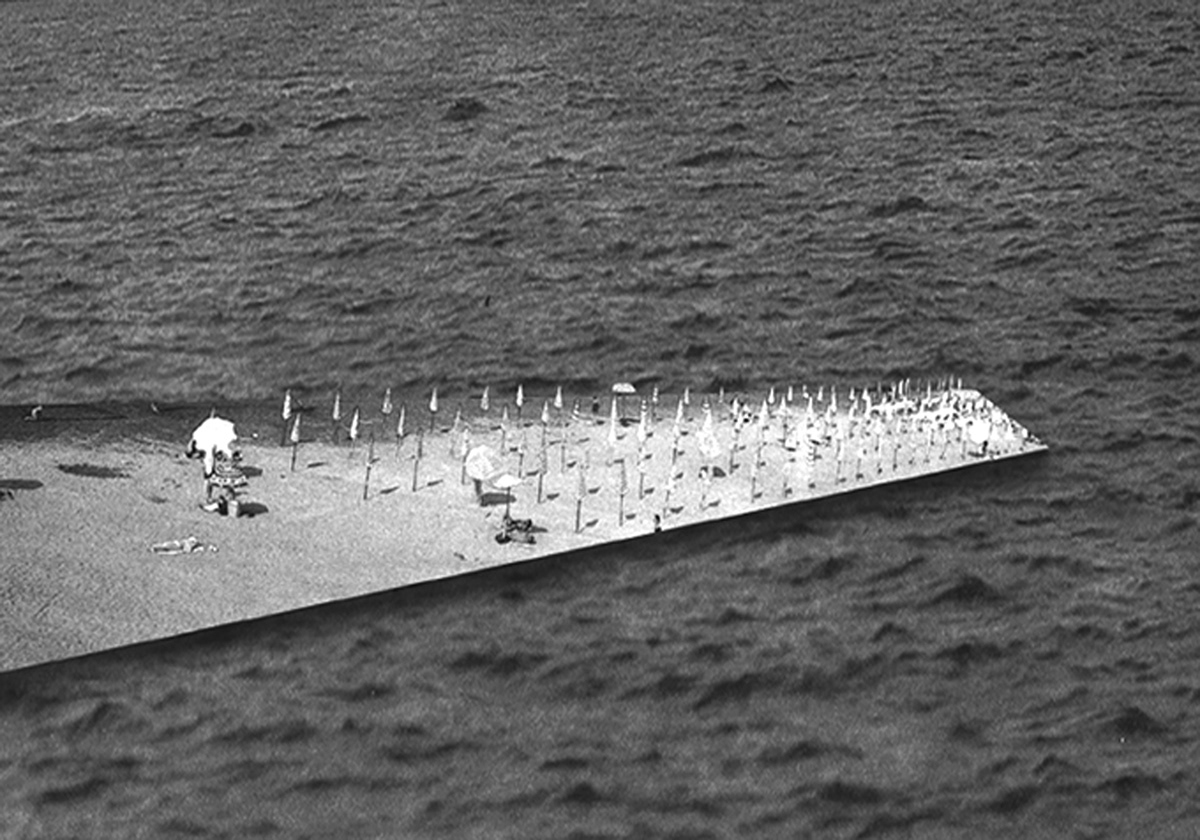
Text fragment from I can swim home... by Jochen Volz
The work “Achille Lauro”, through its title, again takes up these aspects of security, collective and individual fear, and the common longing for pleasure, refreshment and fun. The work comprises a series of photo-montages of beach scenes set against an ocean backdrop, as if the beaches were freely drifting on the open sea. One can conclude from the rough screen pattern of the picture surfaces that the individual elements were enlarged. In fact both the beach details and the ocean photos were taken from found travel prospectuses. All sheets of this series are presented as black-and-white prints. Detached from their advertising context, the portions of beach appear as large floating bodies; their irregular rectangular shapes as well as the systematic arrangement of the depicted beach furniture make them look like aircraft carriers out on the sea. The collage technique isolates these beaches from their geographical and architectural contexts, and they thus turn into abstract shapes against a mostly monochrome background.
Upon the arrest of Mohammed Abu Abbas in Baghdad in April, 2003, and the subsequent international quarrels over the place of jurisdiction, the name “Achille Lauro” once again appeared in the media. At the beginning of October, 1985, the public all over the world was held in suspense for days, when four underground fighters of the Palestinian Liberation Front (PLF), led by Abu Abbas, violently seized control of the cruise ship “Achille Lauro” and hijacked it with 511 passengers on board. The luxury liner was on its way to a ten-day cruise from Genoa to Alexandria via Port Said. The hijack and the threat to blow up the ship were to force the release of 50 Palestinians from Israeli confinement. After four days of negotiations, the ship arrived at an Egyptian port, where the hijackers surrendered to the authorities. Only then did it become known that they had shot dead the 69-year-old American citizen Leon Klinghoffer and thrown him overboard on his wheelchair. The U.S. government then intervened in the affair and with the help of their air force coerced the Egyptian passenger plane, on which the terrorists were to be flown to Tunis, to land in Sicily. Some newspapers reported on this military action under the headline “The Hijack of the Hijackers”. An Italian court sentenced the terrorists to prison. Mohammed Abu Abbas, however, who was the string-puller of the action but not on board the “Achille Lauro”, was released and only one year later sentenced in absence to life imprisonment, a sentence he will now most likely have to serve. After these events, the ship “Achille Lauro” continued to go on cruises until 1994, when it completely burned out on sea. It now lies on the bed of the Indian Ocean as a wreck.
Until today, the hijack of the “Achille Lauro” is regarded as one of the first planned attacks on tourists, making it clear that even a peaceful cruise on one of the largest tourist ships, promising comfort, luxury and recreation, can become the target of terrorists. Although, historically seen, the hijack of the “Achille Lauro” was only one link in a long and gruesome chain of actions and counteractions in the Middle East conflict, its name is certainly associated with the fear of terror. Collectively coming to terms with this fear has led to the production of a television film of the same name in 1990, in which Hollywood star Burt Lancaster, of all people, played the role of the murdered American tourist Leon Klinghoffer. In March of 1991, parallel to the war on Iraq, the Belgian Monnaire Theatre then staged the world premiere of the opera “The Death of Klinghoffer” by the American composer John Adam. And in the summer of 2003, the story again hit the screens in the form of Penny Woolcock’s filming of the opera.
The 1985 ship hijack and of course the many and oftentimes cruel events of the past years have changed the understanding of travelling and holidaymaking in a fundamental way. Each summer, flocks of tourists are directed around current crisis regions; by means of suspense and compassion, the world-wide public follows the hand-over of hostages to the embassies of one native country or the other. It is precisely this urgent need of all holidaymakers for calmness, peace and recreation that has become one of the most sensitive points in a given society. Hakim Bey describes the situation of the tourist and his counterpart in terms of self-understanding, the terrorist, as follows: “The real place of the tourist is not the site of the exotic, but rather the no-place place (literally the “utopia”) of median space, liminal space, in-between space - the space of travel itself, the industrial abstraction of the airport, or the machine dimension of plane or bus. So the tourist and the terrorist ... suffer an identical hunger for the authentic ... The tourist destroys meaning, and the terrorist destroys the tourist.” (Hakim Bey, Overcoming Tourism)
With his works, Sascha Pohle repeatedly succeeds in making a huge net of questions reverberate, without ever being explicit, though. The films as well as the works on paper are sober and subtle. Only because the film lasts one hour does “The Swimmer” really make experienceable the absurdity of the endeavour and thus its power. The film series “Safety Hour” is a matter-of-fact recording of choreographies at a public site which, as safety measures, are meant to protect people from themselves. And with its interplay of travel brochure, aircraft-carrier aesthetics and highly sensitive work title, the series of abstract photo-montages reveals itself as a refined commentary on a political and social situation in which interests seem to have become irreconcilable.
...
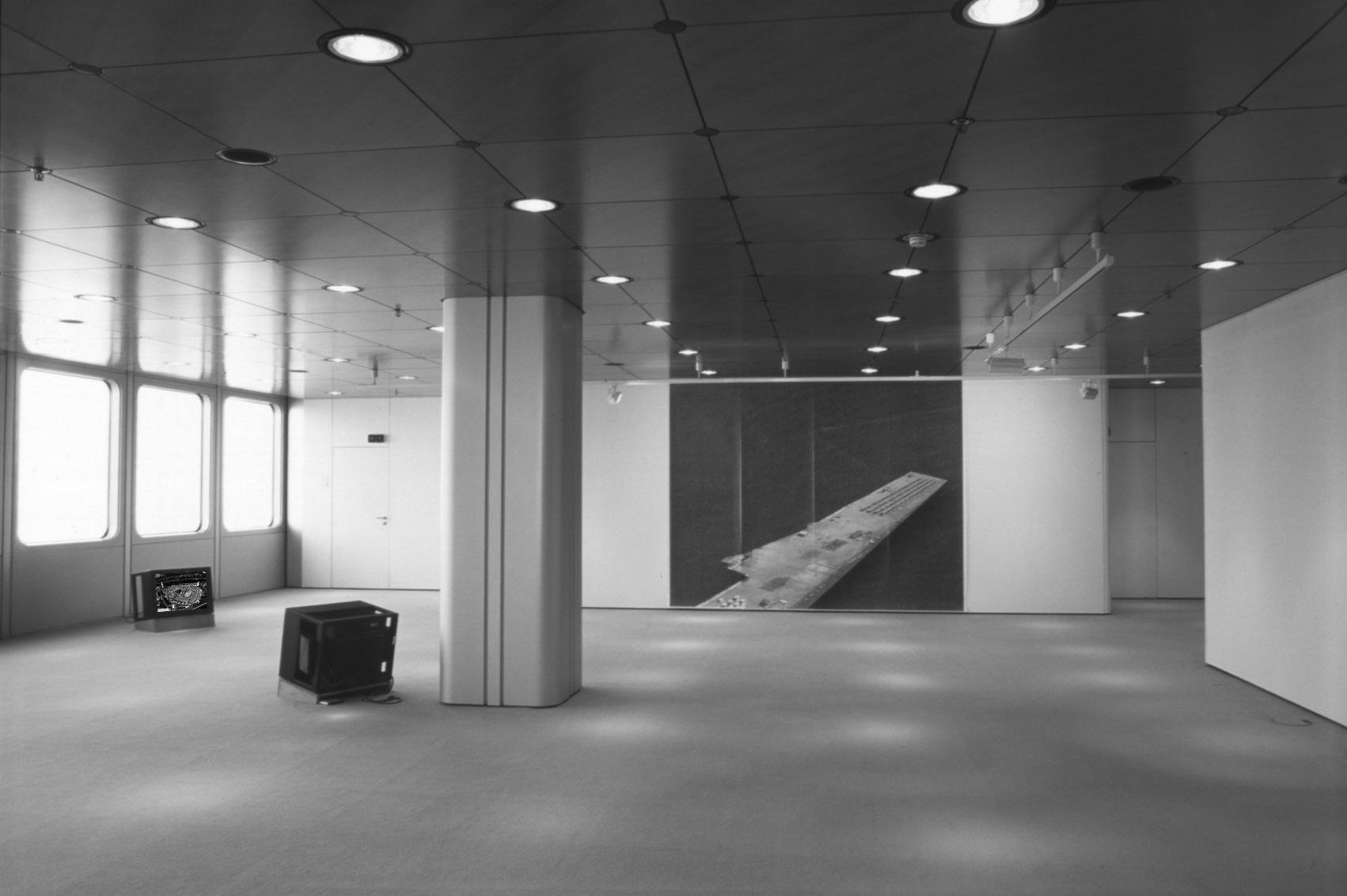
2003 Kulturstiftung Dresden der Dresdner Bank, ‚dynamo.eintracht‘, DE
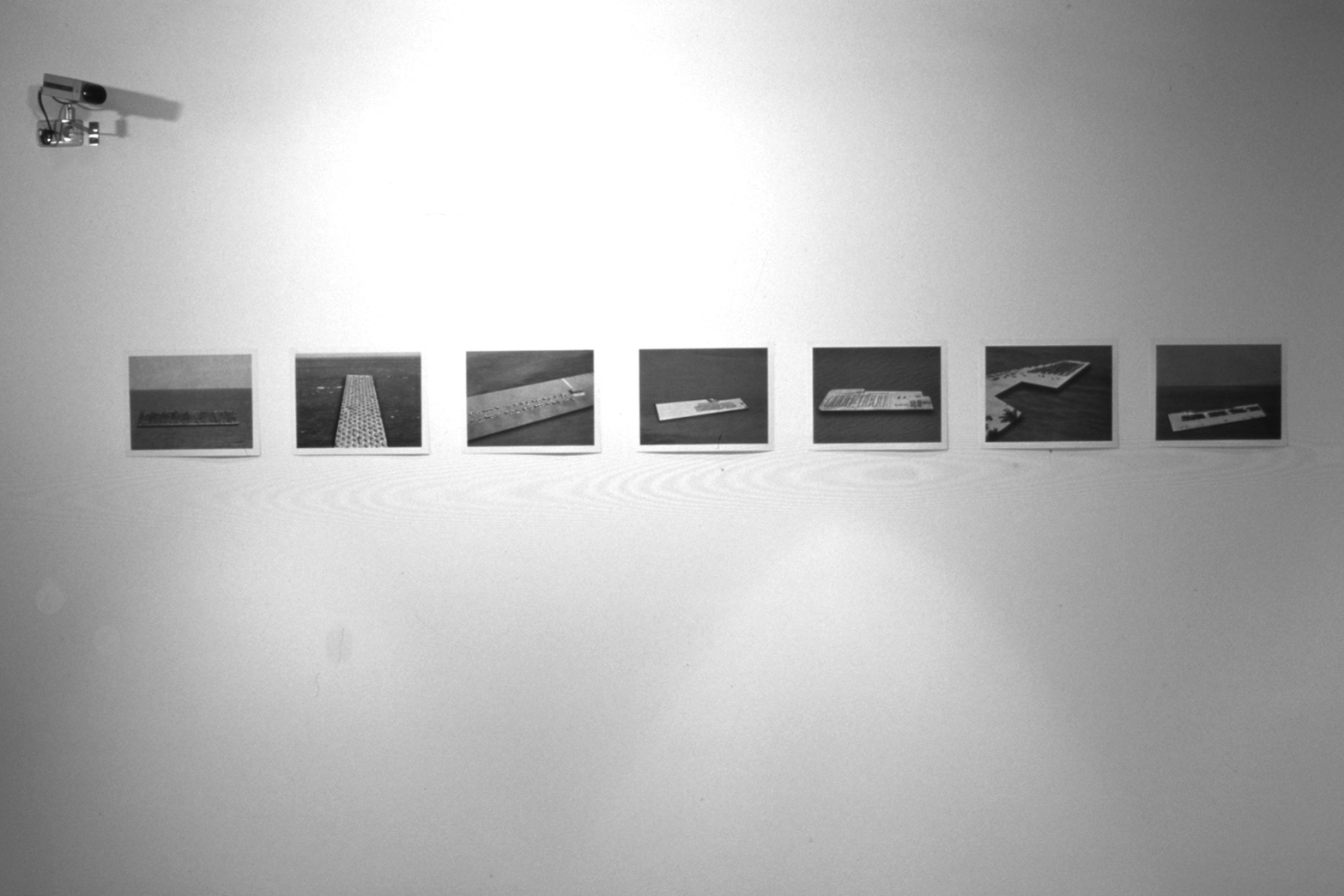
2003 Kulturstiftung Dresden der Dresdner Bank, ‚dynamo.eintracht‘, DE
